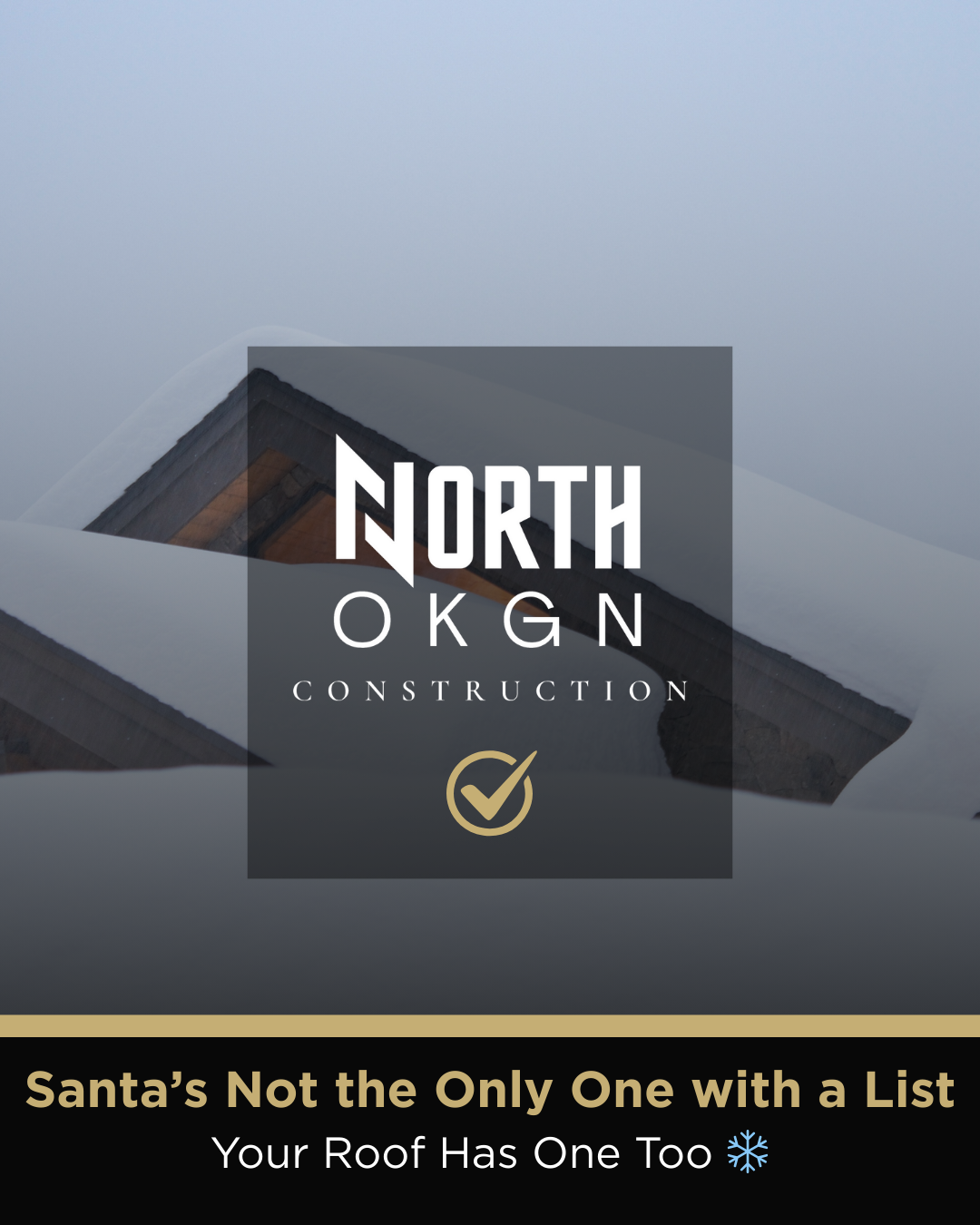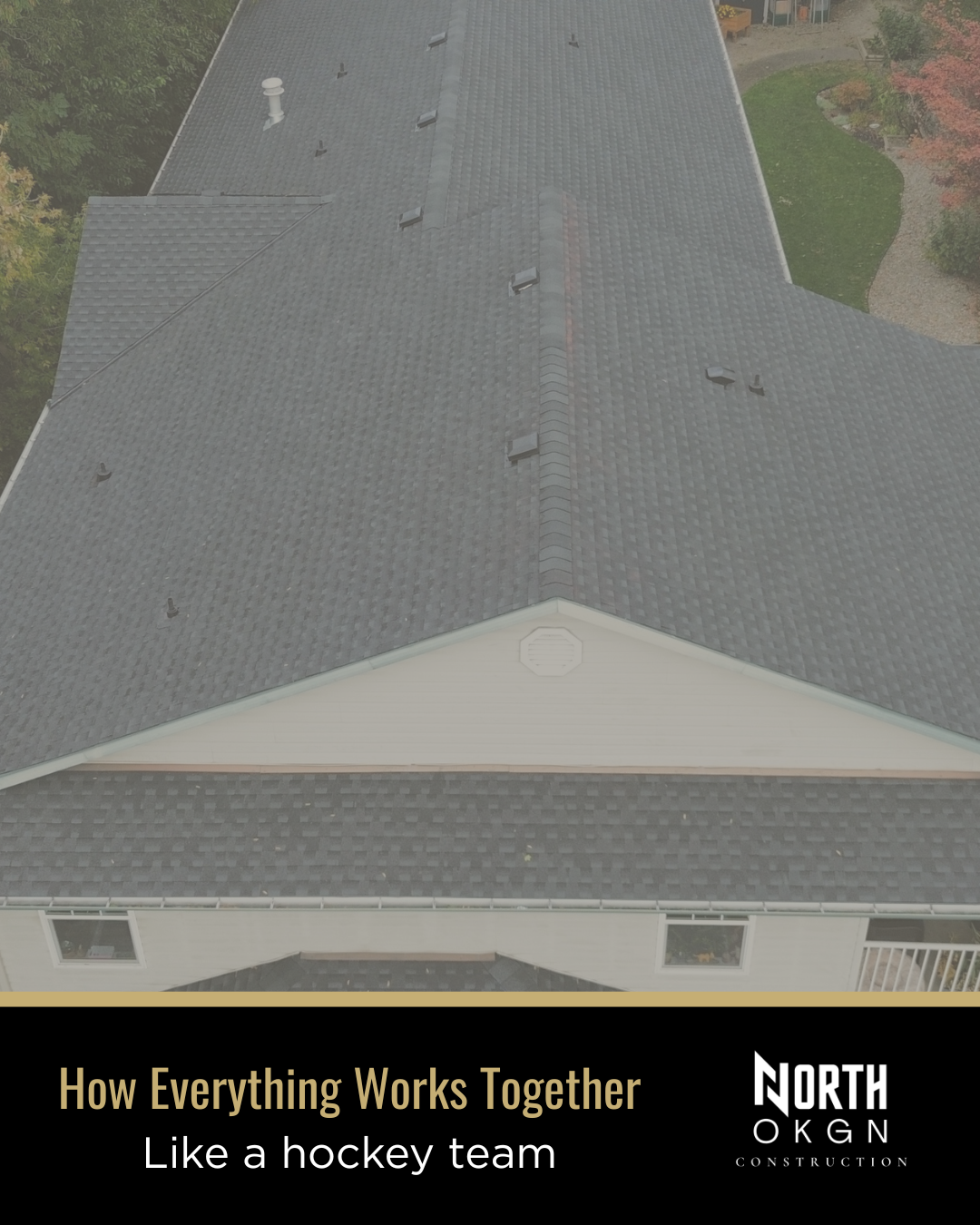Ice Dams: The Silent Villains Sneaking Up On Your Roof This Winter

Ice Dams: The Silent Villains Sneaking Up On Your Roof This Winter
When most people in Vernon and the North Okanagan think winter home issues, they think slippery driveways or clearing walkways. But one of the biggest winter home risks isn’t on the ground, it’s slowly building up right above your head.
We’re talking about ice dams.
Every winter, we see thousands of dollars in damage caused not by “bad roofs”…but by the freeze-thaw cycles in our region. Ice dams are sneaky, silent, and most homeowners have no idea they’re forming until water has already made its way inside the house.
So let’s break down what they are, why they form, what to watch for, and how to prevent them (especially in a region like ours) where winter conditions can go from “mildly snowy” to “welcome to Narnia” overnight.
What Exactly Is An Ice Dam?
An ice dam is a ridge of solid ice that forms along the lower edge of your roof in winter. Here’s the simple science behind it:
- Heat naturally rises inside your home
- That heat leaks out into the attic and warms the roof decking
- Snow on the warm areas melts, then runs down toward the colder overhang
- And then it refreezes at the edge
Over time, that creates a thick “dam” of ice.
The problem isn’t the ice itself.
It’s the water that gets trapped behind it.
Once water can’t run off your roof, it backs up…and trust us, water ALWAYS finds a way in. Usually into places you’d prefer it not to: ceilings, walls, attics, insulation, light fixtures, drywall…you get the idea.
Why Ice Dams Are Common In Vernon + North Okanagan
Our winter climate is the perfect storm:
- Wet, heavy snow
- Freeze/thaw cycles
- Sunny but sub-zero days
That combination makes roofs warm at the top and cold at the eaves. Ice dams love that. If you’ve ever seen houses with giant icicles hanging along the eaves? That’s not “winter aesthetic.” That’s your roof trying to send you a distress signal.
What Ice Dams Can Do To Your Roof
Ice dams can lead to:
- Water leaks
- Mold or mildew in the attic
- Damaged insulation
- Rotting plywood roof decking
- Dripping light fixtures (yes, that happens)
- Interior drywall repairs
This is also where insurance claims often come into the picture and that paperwork is no one’s favourite Christmas present!
How To Spot Ice Dams Early
Common signs:
- Persistent icicles hanging along gutters
- Damp drywall near exterior walls upstairs
- Mysterious ceiling stains that weren’t there last week
- Frost buildup in the attic
- Water where water has absolutely no business being
If you notice any of this…do not wait until spring. This is a “do not pass Go, do not collect $200” situation. Water damage doesn’t wait politely for warmer weather and it never gets cheaper with time.
Quick Temporary Fixes Homeowners Can Try
Before we get into these, let’s be clear about what not to do.
Some homeowners climb onto their roofs and try to remove ice dams with hoses, buckets of hot water, shovels, or garden rakes. Please don’t. Not only is that a huge personal safety risk…but that kind of DIY “attack” can actually cause more damage to your shingles, granules, gutters, and underlayment than the ice dam itself.
Now that we’ve addressed the danger zone; here are some safer temporary ways to reduce risk while you wait for a proper inspection:
- Use a roof rake from the ground (never get on the roof itself). If you’re buying one, make sure it’s specifically designed for roofs (not just a generic snow rake) to avoid accidentally scraping or tearing shingles.
- Ensure bathroom and kitchen fans are venting outdoors (not dumping warm, humid air into the attic).
- Reduce indoor humidity (turn humidifiers off temporarily, run kitchen and bath fans a little longer).
- Place a box fan inside your home aimed toward the attic access to help cool the attic space quickly. This can slow rapid melt.
These are stop-gaps. They buy time, they don’t fix the root cause.
Permanent Fixes + What North OKGN Construction Usually Does
When we come out to deal with ice dams, the first priority is stopping active water entry and preventing damage from worsening. In winter, this often looks like:
- carefully removing snow with roof-friendly methods
- creating channels to let trapped water escape
- installing temporary roof protection if needed
Once the emergency is handled, the REAL solution usually comes down to controlling attic temperature and moisture.
This can include:
- improving attic ventilation (soffit intake + roof exhaust balance)
- correcting insulation issues so heat isn’t escaping unevenly
- sealing attic air leaks around vents, can lights, plumbing stacks
And in vulnerable roof areas (eaves, valleys, low slopes) we recommend a product called Ice & Water Shield (a peel-and-stick waterproof membrane installed underneath shingles specifically to prevent water intrusion from ice dams.) It’s not just a “nice to have.” In Vernon’s climate, it’s one of the smartest long-term protections a homeowner can invest in.
Final Thoughts
Ice dams aren’t a sign your roof is “bad.” They’re a sign your roof and your attic are having a winter communication breakdown.
Think of it like hockey equipment: if your helmet fits wrong, you don’t blame the ice. You adjust the gear.
Proper ventilation + proper insulation + proper winter prep → far less ice dam risk.
North OKGN Construction is a family-owned local contractor serving Vernon and the surrounding North Okanagan and yes, we do roofs!
If you’re worried about ice dam formation or already seeing the early warning signs, we’re here to help with winter inspections, emergency patching, and support navigating insurance claims if things have already gone sideways.
Protect your home now so that spring is just spring, not soggy ceiling repair season.


















